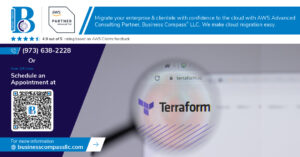In today’s data-driven world, businesses are constantly seeking ways to manage, store, and analyze vast amounts of information efficiently. 🚀 But with so many database options available, how do you choose the right one for your specific needs? Enter Amazon Web Services (AWS) and its powerful suite of database solutions.
From traditional relational databases to cutting-edge NoSQL platforms, AWS offers a diverse range of database services designed to meet the demands of modern applications. Whether you’re running a small e-commerce site or managing a global enterprise, understanding the real-world use cases of AWS databases like RDS, DynamoDB, Aurora, Redshift, and ElastiCache can be a game-changer for your organization. 💡
In this blog post, we’ll dive deep into the practical applications of these AWS database services, exploring how they power everything from high-performance web applications to complex data warehousing solutions. We’ll uncover the unique strengths of each database type and show you how combining them in multi-database architectures can unlock even greater potential. So, buckle up as we embark on a journey through the fascinating world of AWS databases and their real-world impact!
Understanding AWS Database Services
A. Overview of RDS, DynamoDB, Aurora, Redshift, and ElastiCache
AWS offers a diverse range of database services to cater to various application needs. Let’s explore the key characteristics of each:
-
RDS (Relational Database Service):
- Managed relational database service
- Supports multiple database engines (MySQL, PostgreSQL, Oracle, SQL Server)
- Ideal for structured data and complex queries
-
DynamoDB:
- Fully managed NoSQL database
- Serverless and scalable
- Suitable for high-performance, low-latency applications
-
Aurora:
- MySQL and PostgreSQL-compatible relational database
- Offers up to 5x performance of standard MySQL
- Designed for high availability and durability
-
Redshift:
- Fully managed data warehouse
- Optimized for analytics and big data processing
- Supports petabyte-scale data storage and complex queries
-
ElastiCache:
- In-memory caching service
- Supports Redis and Memcached engines
- Enhances application performance and reduces database load
B. Key features and benefits of each service
| Service | Key Features | Benefits |
|---|---|---|
| RDS | Automated backups, Multi-AZ deployment | Easy management, High availability |
| DynamoDB | Auto-scaling, Global tables | Seamless scalability, Global distribution |
| Aurora | Distributed storage, Continuous backups | High performance, Fault-tolerance |
| Redshift | Columnar storage, Massive parallel processing | Fast query performance, Cost-effective scaling |
| ElastiCache | Sub-millisecond latency, Encryption at-rest | Improved application speed, Enhanced security |
C. Comparing AWS database offerings
When choosing an AWS database service, consider the following factors:
- Data structure: RDS and Aurora for structured data, DynamoDB for semi-structured or unstructured data
- Scalability needs: DynamoDB for automatic scaling, Redshift for data warehouse scaling
- Performance requirements: Aurora for high-performance OLTP, ElastiCache for real-time data access
- Analytics capabilities: Redshift for complex analytical queries and big data processing
- Global distribution: DynamoDB global tables for multi-region deployments
By understanding these AWS database services, you can make informed decisions on which solution best fits your application’s needs. Next, we’ll delve into specific use cases for RDS and how it powers relational database applications in various industries.
RDS: Powering Relational Database Applications
E-commerce platforms utilizing RDS
Amazon RDS (Relational Database Service) plays a crucial role in powering e-commerce platforms. Its scalability and reliability make it an ideal choice for managing product catalogs, customer data, and order processing.
-
Product Catalog Management: RDS efficiently stores and retrieves product information, including:
- Product descriptions
- Pricing details
- Inventory levels
- Category classifications
-
Customer Data Handling: E-commerce sites use RDS to securely manage:
- User profiles
- Purchase history
- Shipping addresses
- Payment information
| Feature | Benefit for E-commerce |
|---|---|
| Scalability | Handles high traffic during sales events |
| Reliability | Ensures consistent uptime for 24/7 shopping |
| Backup | Protects critical business data |
| Security | Safeguards sensitive customer information |
Content management systems backed by RDS
Content Management Systems (CMS) rely on RDS for storing and managing vast amounts of digital content. RDS provides the necessary structure and performance for handling complex content relationships and user interactions.
Key advantages of using RDS for CMS:
- Efficient content organization
- Fast content retrieval
- Multi-user collaboration support
- Version control capabilities
Financial services leveraging RDS for transactional data
In the financial sector, RDS is instrumental in managing critical transactional data. Its ACID compliance ensures data integrity, while its performance capabilities support high-volume financial operations.
| RDS Feature | Financial Service Application |
|---|---|
| ACID Compliance | Ensures transaction accuracy |
| Read Replicas | Supports real-time reporting |
| Multi-AZ Deployment | Provides high availability for critical services |
Healthcare applications storing patient records
Healthcare organizations utilize RDS to securely store and manage patient records. The service’s compliance with various healthcare regulations makes it a reliable choice for handling sensitive medical data.
RDS enables healthcare applications to:
- Maintain comprehensive patient histories
- Manage appointment schedules
- Store diagnostic results
- Facilitate secure data sharing among healthcare providers
With RDS powering these diverse applications, businesses can focus on their core functionalities while AWS handles the database management complexities. Next, we’ll explore how DynamoDB caters to high-performance NoSQL solutions in various industries.
DynamoDB: Enabling High-Performance NoSQL Solutions
A. Mobile apps utilizing DynamoDB for real-time data sync
DynamoDB’s low-latency and high-throughput capabilities make it an ideal choice for mobile applications requiring real-time data synchronization. Here’s how DynamoDB empowers mobile apps:
- Offline Support: DynamoDB enables offline data storage and synchronization, allowing users to access and modify data even without an internet connection.
- Conflict Resolution: It provides built-in conflict resolution mechanisms to handle simultaneous updates from multiple devices.
- Scalability: DynamoDB automatically scales to accommodate growing user bases and data volumes.
B. Gaming leaderboards and user profiles
Gaming applications leverage DynamoDB’s speed and flexibility for managing leaderboards and user profiles:
| Feature | DynamoDB Advantage |
|---|---|
| Leaderboards | Rapid updates and retrieval of scores |
| User Profiles | Flexible schema for diverse player data |
| Achievements | Easy tracking and updating of player accomplishments |
C. IoT device data management
DynamoDB excels in handling the massive influx of data from IoT devices:
- High Write Throughput: Capable of processing millions of updates per second from connected devices.
- Time-to-Live (TTL): Automatically expires old data to manage storage costs.
- Flexible Schema: Adapts to various device types and data formats.
D. Session management for web applications
Web applications benefit from DynamoDB’s fast read/write operations for session management:
- Stores session data with sub-millisecond latency
- Supports automatic expiration of session data
- Enables seamless scaling for high-traffic websites
E. Real-time bidding platforms in adtech
DynamoDB’s speed and consistency make it suitable for real-time bidding in advertising technology:
- Processes bids in milliseconds
- Maintains consistent data across global regions
- Supports complex queries for targeting and analytics
Now that we’ve explored DynamoDB’s versatility across various use cases, let’s examine how Aurora enhances mission-critical database performance.
Aurora: Enhancing Mission-Critical Database Performance
SaaS platforms leveraging Aurora’s scalability
Aurora’s unparalleled scalability makes it an ideal choice for SaaS platforms handling rapidly growing user bases. With its ability to automatically scale storage from 10GB to 128TB, SaaS companies can focus on product development without worrying about database limitations.
| Feature | Benefit for SaaS Platforms |
|---|---|
| Auto-scaling | Handles sudden traffic spikes |
| Read replicas | Improves performance for read-heavy workloads |
| Global database | Enables multi-region deployment |
Social media applications handling massive user data
Social media platforms benefit immensely from Aurora’s capacity to manage vast amounts of user-generated content. Its ability to handle millions of requests per second makes it suitable for:
- User profile management
- Post storage and retrieval
- Real-time notifications
- Analytics and trend tracking
Streaming services managing content metadata
Aurora’s performance shines in streaming services, where it efficiently manages extensive metadata catalogs. Its low-latency read operations ensure swift content discovery and personalized recommendations.
Financial trading systems requiring low-latency operations
In the high-stakes world of financial trading, Aurora’s sub-10ms latency is a game-changer. It supports:
- Real-time market data processing
- Order execution and tracking
- Risk management calculations
Now that we’ve explored Aurora’s capabilities across various industries, let’s examine how Redshift empowers data warehousing and analytics in the next section.
Redshift: Empowering Data Warehousing and Analytics
Business intelligence and reporting solutions
Redshift’s powerful data warehousing capabilities make it an ideal choice for business intelligence and reporting solutions. Companies can leverage Redshift to:
- Consolidate data from multiple sources
- Perform complex queries on large datasets
- Generate real-time reports and dashboards
Here’s a comparison of Redshift’s features for BI and reporting:
| Feature | Benefit |
|---|---|
| Columnar storage | Faster query performance |
| Massively Parallel Processing | Efficient handling of large datasets |
| Scalability | Easily accommodate growing data volumes |
| Integration with BI tools | Seamless connectivity with popular analytics platforms |
Customer behavior analysis in retail
Retailers use Redshift to gain insights into customer behavior, enabling:
- Personalized marketing campaigns
- Inventory optimization
- Pricing strategy refinement
Log analysis and cybersecurity threat detection
Redshift’s ability to process massive amounts of log data makes it valuable for:
- Identifying potential security threats
- Analyzing system performance
- Tracking user activity across multiple platforms
Scientific research data processing
Research institutions utilize Redshift for:
- Storing and analyzing large-scale experimental data
- Collaborating on complex scientific computations
- Visualizing research findings
Predictive maintenance in manufacturing
Manufacturers leverage Redshift to:
- Analyze sensor data from equipment
- Predict potential failures before they occur
- Optimize maintenance schedules
By harnessing Redshift’s data warehousing capabilities, organizations across various industries can make data-driven decisions and gain valuable insights. Next, we’ll explore how ElastiCache accelerates application performance through in-memory caching.
ElastiCache: Accelerating Application Performance
Real-time leaderboards in gaming
ElastiCache excels in powering real-time leaderboards for gaming applications. By utilizing Redis, game developers can store and update player scores instantly, ensuring a seamless and competitive gaming experience. Here’s how ElastiCache enhances leaderboard functionality:
- Low-latency updates: Scores are updated in milliseconds, providing instant feedback to players
- Sorted sets: Redis sorted sets allow for efficient ranking and retrieval of top players
- Scalability: ElastiCache can handle millions of concurrent users without performance degradation
| Feature | Benefit |
|---|---|
| In-memory storage | Ultra-fast read/write operations |
| Replication | High availability and fault tolerance |
| Pub/Sub messaging | Real-time updates across game servers |
Social media feed caching
ElastiCache significantly improves the performance of social media platforms by caching user feeds. This approach reduces database load and enhances user experience:
- Store frequently accessed posts in ElastiCache
- Update cache when new content is created or interactions occur
- Serve cached content to users, minimizing database queries
Session store for e-commerce websites
E-commerce platforms benefit from ElastiCache’s ability to manage user sessions efficiently:
- Fast access: Retrieve user data, shopping cart contents, and preferences quickly
- Persistence: Maintain session information across multiple application servers
- Security: Implement encryption and access controls to protect sensitive user data
Caching layer for content delivery networks
Content delivery networks (CDNs) leverage ElastiCache to accelerate content delivery:
- Cache frequently accessed content near the edge
- Reduce origin server load by serving cached content
- Implement intelligent cache invalidation strategies
By integrating ElastiCache, applications across various domains can achieve significant performance improvements and enhanced user experiences.
Multi-Database Architectures: Combining AWS Database Services
Microservices utilizing different database types
Microservices architectures often leverage multiple database types to optimize performance and scalability. Here’s how different AWS database services can be combined:
| Microservice | Database Service | Reason |
|---|---|---|
| User Management | RDS (MySQL) | ACID compliance, complex queries |
| Product Catalog | DynamoDB | High-speed reads, flexible schema |
| Order Processing | Aurora | High throughput, low latency |
| Analytics | Redshift | Large-scale data warehousing |
| Caching | ElastiCache | In-memory data store for fast access |
By utilizing various database types, each microservice can leverage the strengths of its chosen database, resulting in optimized performance and scalability.
Data lakes integrating various data sources
Data lakes in AWS often combine multiple database services to handle diverse data types and analytics requirements:
- S3 for raw data storage
- DynamoDB for metadata management
- Redshift for structured data analysis
- Aurora for operational data storage
- ElastiCache for real-time data processing
This multi-database approach enables organizations to process and analyze data from various sources efficiently.
Hybrid cloud solutions with on-premises and AWS databases
Hybrid cloud architectures often involve a combination of on-premises and AWS database services. For example:
- On-premises Oracle database replicating to Amazon RDS for disaster recovery
- DynamoDB Global Tables for multi-region data distribution
- Aurora as a scalable extension of on-premises MySQL databases
These hybrid solutions provide flexibility and leverage the strengths of both on-premises and cloud infrastructure.
Event-driven architectures leveraging multiple database services
Event-driven architectures can benefit from combining various AWS database services:
- DynamoDB Streams for capturing data changes
- Lambda for processing events
- ElastiCache for temporary event storage
- Aurora for persisting processed event data
This multi-database approach enables real-time data processing and analysis in event-driven systems.
AWS database services offer a powerful suite of tools to address diverse data management needs across industries. From RDS for traditional relational databases to DynamoDB for NoSQL solutions, Aurora for high-performance mission-critical applications, Redshift for data warehousing, and ElastiCache for caching, each service caters to specific use cases. By leveraging these services individually or in combination, organizations can build robust, scalable, and efficient database architectures tailored to their unique requirements.
As businesses continue to evolve in the digital age, embracing cloud-based database solutions becomes increasingly crucial. AWS’s comprehensive database offerings provide the flexibility, performance, and cost-effectiveness needed to stay competitive in today’s data-driven landscape. Whether you’re a startup or an enterprise, exploring and implementing these AWS database services can significantly enhance your organization’s data management capabilities and drive innovation.



















